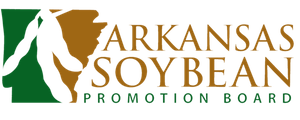Tool Kit to Provide Outreach Materials for Implementing Voluntary Smoke Management Guidelines and to Inform About Prescribed Fire as a Management Tool
LITTLE ROCK, AR - A tool kit is available for partners in agriculture and conservation to promote the implementation of Voluntary Smoke Management Guidelines by row crop farmers, and to inform the public about the value of prescribed fire as a management tool. Outreach materials including videos and public service announcements are included in the tool kit, available for free here. Voluntary Smoke Management Guidelines are available here.
Row crop farmers use prescribed fire in August and September as part of crop management plans to remove stubble following the harvest of rice, soybeans, corn, and cotton. Prescribed burning is an efficient and economical control method of eliminating pests and diseases that can be detrimental to future crops, and of preparing fields for the next growing season. Burning crop residue also allows for no-till or reduced-till planting during the next growing season. Smoke management planning prior to the application of prescribed fires helps to reduce smoke impact on roadways, nearby towns, and sensitive areas like schools, nursing homes, churches, and other facilities.
"Prescribed fire is good for Arkansas agriculture. Low impact smoke from the application of prescribed fire is a result of good management. It is vital that we adopt this simple process so we can continue the responsible stewardship of our resources and avoid future regulations and red tape for our producers," said Jeff Rutledge, Chairman Arkansas Rice Federation.
Tool kit outreach resources focus on the following five items included in the Safe Burning Checklist, which farmers complete before applying prescribed fire:
- Take extra precautions for smoke sensitive areas (highways, residents, communities, etc.)
- Report burns to the Arkansas Agriculture Department (AAD) Dispatch Center (1-800-830-8015)
- Check to make sure relative humidity is above 20%
- Check to make sure wind speed is less than 15 mph
- Be sure to follow appropriate Smoke Category Day guidelines
Reporting the burn to the AAD Dispatch Center provides a full understanding to the farmer of weather conditions, information about other burns in the area, and proximity of nearby smoke sensitive areas like schools, nursing homes, and highways. Reporting the burn also provides notice to the public by having the burn added to a publicly available list at http://www.arkfireinfo.org.
"Following Voluntary Smoke Management Guidelines benefits managers of all agricultural burning and helps us remain good partners to residents," said Arkansas Agriculture Secretary Wes Ward. "We hope this tool kit helps inform farmers about simple steps to take that protect our practices, and that it helps inform the public about why we need prescribed fire as a management tool."
